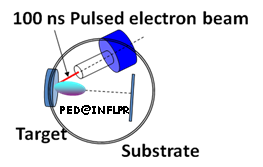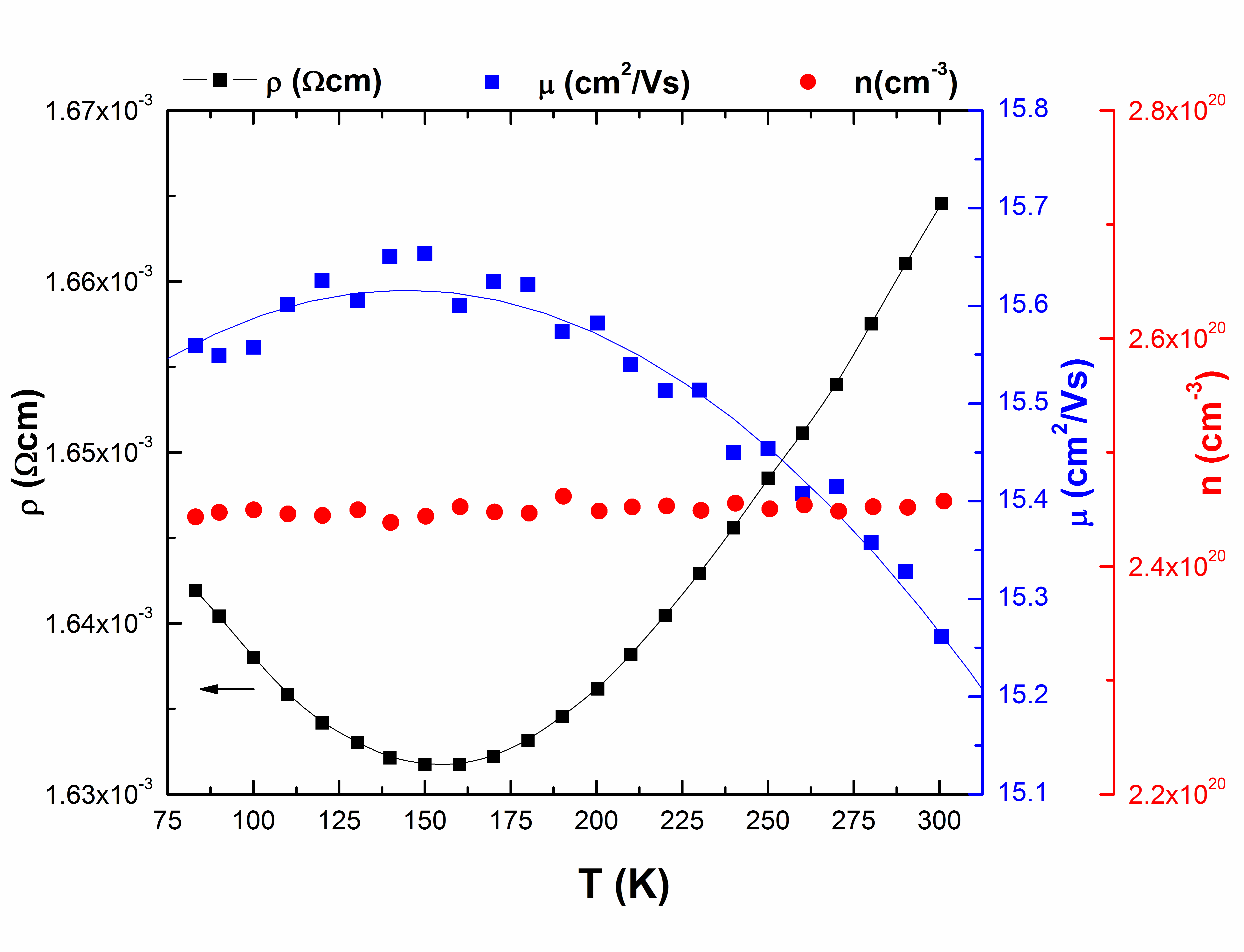Epitaxial
oxide thin films were grown by
PED on single crystal substrates leading to films with different functional physical
properties.
As
example, epitaxial indium oxide films with the cubic bixbyite structure
obtained by PED on c-cut sapphire substrates revealed two distinct structural
phases in the films: an ordered bixbyite phase with the three-fold symmetry in
the (111) plane, and a disordered bixbyite phase with a six-fold symmetry in
the (111) plane. This large disorder in the oxygen network of In2O3 films
maintained the high optical transparency but tailored the electrical properties.
The research covered fundamental science related to thin film composition and structure
and applied research through “passive” or “active” properties of thin films. Nd-doped ZnO films were grown with highly
tunable properties, from transparent conducting oxide (“passive films”) to photon down-shifting thin films (“active” films)
for solar cells.
Largely oxygen deficient ITO and In2O3 thin films grown by PED and PLD lead to the
synthesis of nanocomposite films, i.e. metallic (In, Sn) clusters embedded in a stoichiometric and crystalline oxide
matrix. The presence of these metallic clusters induces a metallic conductivity via percolation with a superconducting
transition at low temperature (about 6 K) and the melting and freezing of the In-Sn clusters in the room temperature
to 450 K range evidenced by large changes in resistivity and a hysteresis cycle.
Field effect TTFT were fabricated on glass and on low-cost paper substrates. In2O3
and ZnO and transparent thin films, either channel or conducting electrodes, were grown by PED in the classical
approach or by self-assembled source-channel-drain structures in a single deposition process with a shadow mask.

